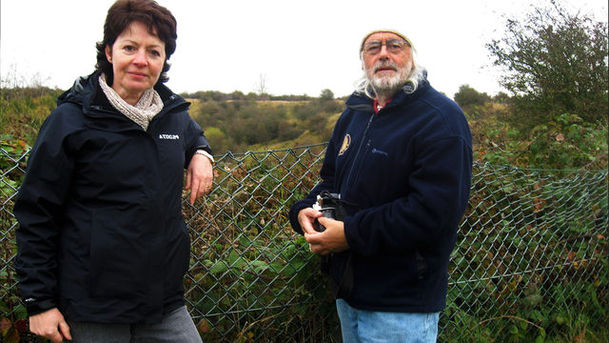Open Country - The Hanbury Crater

In the Staffordshire countryside, just a few miles from Burton-on-Trent, a wire fence surrounds a deep crater measuring over half a mile wide. Nearby signs warn passers by of the sudden drop and that the land contains unexploded bombs which, in the event of an explosion, could cause injury or death. This is where what is widely believed to be the UK's largest explosion occurred on November 27th 1944 when an underground ammunition store at nearby Fauld blew up detonating 3-4,000 tons of explosives and devastating acres of countryside, killing 70 people, hundreds of sheep and cattle and completely obliterating a nearby farm. The Cock Inn in Hanbury was so badly damaged that it had to be completely rebuilt. For 18 people whose bodies were never found the crater remains their graves, marked by a granite memorial stone close to the perimeter fence. On the 65th anniversary of the explosion, Helen Mark visits Hanbury, the scene of this wartime tragedy, and talks to local people and survivors about their memories of that day and how the explosion changed their lives and the landscape around them forever. For over 40 years, nothing would grow in what became known to locals as the 'bomb hole' until slowly nature began to reclaim the Hanbury Crater. Helen is joined by the Time Team's Professor Mick Aston and together they visit the crater and go underground at Fauld Gypsum Mine, which dates back to Roman times. The mine was connected to the ill-fated ammunitions store by the reservoir supplying the steam to operate a nearby plastic factory. The greatest loss of life occurred among the factory workers and those underground, who were either drowned or gassed as tonnes of mud and toxic fumes engulfed them. How could such a tragedy happen?